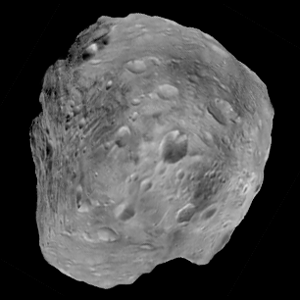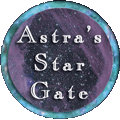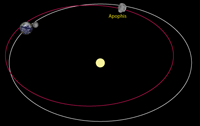
Astra's Asteroid Catalog



A Potentially Hazardous Asteroid
Apophis, a very scary asteroid...
Links to Information on this PHA

An NEA is considered a Potentially Hazardous Asteroid (PHA) when its orbit comes within 0.05 AU (7.5 million km) of the Earth's orbit. This is referred to as the Earth Minimum Orbit Intersection Distance (MOID)The largest known PHA is 4179 Toutatis (1989 AC), 9 km in diameter. One of the most frightening of all the PHA's that we have detected was given the designation of 2004 MN4. It was later named Apophis after a fictitious character as described in one of the links below.
Some asteroids have been observed more often then others. Apophis has been observed over 4,000 times since its discovery as of the opening of 2014. These observations have been submitted to the Minor Planet Center
One of the scariest asteroids of all time, Apophis was discovered on June 19, 2004 by astronomers using the 90-inch Bok Telescope at Kitt Peak National Observatory in Arizona. Apophis is an Aten asteroid that orbits> the sun every 323.5 days. It has been officially observed over 4,000 times and in April 2013, the Aericibo radio telescope took additional measurements to rule out the possibility of a strike by Apophis in 2029.
Predicting Apophis Earth Encounters in 2029 and 2036 - Paper published by J. D. Giorgini, et al. (The link goes to a downloadable pdf paper.)
2004 MN4 - University of Hawaii Press Release
Asteroid 99942 Apophis was discovered in 2004 by University of Hawaii astronomers David Tholen, Fabrizio Bernardi, and Roy Tucker of the University of Arizona using the Bok telescope at Kitt Peak Observatory. David Tholen and Roy Tucker, as co-discovers of 2004 MN4, were entitled to name the asteroid. As they were fans of the TV series Stargate SG-1,they choose to name the asteroid after the show's villain, an alien named Apophis. The name is the Greek version of an Egyptian god who was the enemy of light and order, the very personification of evil. Because 2004 MN4 was a threatening asteroid as well as an Aten, they choose to call their newly discovered asteroid Apophis.
December 23, 2004 NEA 2004 MN4 Reaches Highest Score on Hazard Scale NASA's NEO Office puts out an alert
Friday the 13th, 2029
May 2005: Asteroid 2004 MN4 will come scarily close to Earth on April 13, 2029, but it will not hit.
2004 MN4: Swing and a Miss - by Astronomy Magazine, an article about Apophis that addresses what goes into newly detected PHAs and measuring impact risk.
Asteroid Apophis set for a makeover - by Astronomy Magazine, more about Apophis. August 18, 2005
Video: The Apophis Asteroid: What You Need To Know
From Deep astronomy - a youtube channel for space fans. The Apophis video is from 2011, but has good information
Video: Asteroid Apophis and Blue Origin - SpacePod 11.11.21
Uploaded on Jul 30, 2009:
JPL scientists use advanced technologies to track asteroids and comets that have the potential to one day come close to Earth
Credits: ESA/Herschel/PACS/MACH-11/MPE/B.Altieri (ESAC) and C. Kiss (Konkoly Observatory) Image of Apophis from Herschel
Potential Impact Detection for NEAs: The Case of 99942 Apophis - Steven R. Chesley
This page was updated by Dawn Jenkins, June 27, 2022.